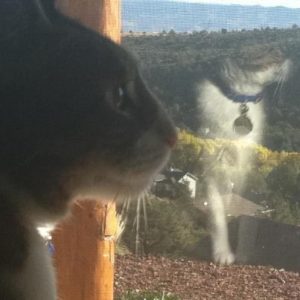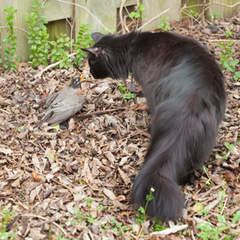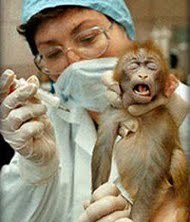
Lord Tennyson
I recently lost my beloved pet cat, Bo Bentley. While attempting to cope with the intense pain that accompanies the loss of a friend, I found some comfort in the words of Dr. Moira Anderson Allen, M.Ed., author of the award-winning book “Coping with Sorrow on the Loss of Your Pet.”
Dr. Allen explains that grief over the loss of a pet is normal and you shouldn’t be surprised if you feel devastated by your loss. Some people won’t understand your pain. Don’t let others dictate your feelings because your feelings are valid. Remember, you are not alone; thousands of pet owners have gone through these same feelings. Different people experience grief in different ways. Besides sorrow, you may also experience guilt, denial, anger and depression.
Guilt comes from the “if only I had been more careful” syndrome. It is pointless to burden yourself with guilt because it only makes it more difficult to resolve your grief.
Denial results from the inability to adjust to the fact your pet really is gone. It’s hard to imagine he won’t greet you when you come home, or nudge you for his evening meal. Some pet owners find it hard to adopt a new pet for fear of being “disloyal” to the deceased pet.
Anger may be directed at the illness that killed your pet, the driver of the speeding car, the veterinarian who “failed” to save his life. It is important that you don’t let anger distract you from the important task of resolving your grief.
Depression is a natural consequence of grief, but it can leave you powerless to cope with your feelings. Extreme depression robs you of motivation and energy, causing you to dwell only upon your sorrow.
It is important that you are honest with your feelings. Don’t deny your pain, or your anger and guilt. Only by examining and coming to terms with your feelings are you able to work through them.
You have a right to feel pain and grief. Someone you loved has died, and you feel alone and bereaved. You have a right to feel anger and guilt, as well. Acknowledge your feelings, but then ask yourself whether the circumstances actually justify them.
Locking away grief doesn’t make it go away. Express it. Cry, scream, pound the floor and talk it out. Do what helps you the most. Don’t try to avoid grief by not thinking about your pet; instead, reminisce about the good times. This will help you understand what your pet’s loss actually means to you.
Some find it helpful to express their feelings and memories in poems, stories or letters to the pet. Other strategies include rearranging your schedule to fill the times you would have spent with your pet; preparing a memorial such as a photo collage; and talking to others about your loss.
If your family or friends love pets, they’ll understand what you’re going through. Don’t hide your feelings in a misguided effort to appear strong. Working through your feelings with another person is one of the best ways to put them in perspective and find ways to handle them. Find someone you can talk to about how much your pet meant to you and how much you miss him – someone you feel comfortable crying and grieving with.
If you don’t have family or friends who understand, or if you need more help, ask your veterinarian to recommend a pet loss counselor or support group. Check with your church or hospital for grief counseling. Remember, your grief is genuine and deserving of support.



 I want to talk about senior cats. These lovable animals have many good years of love left – making them ideal pets for senior citizens.
I want to talk about senior cats. These lovable animals have many good years of love left – making them ideal pets for senior citizens.
 With a $32 billion budget, the
With a $32 billion budget, the 